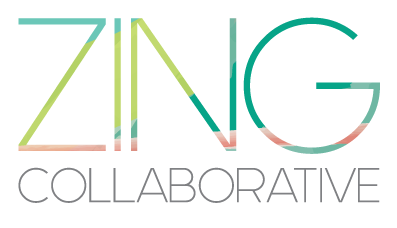Holding Neutral vs. Assuming Positive Intent
For many years, I subscribed to the philosophy: “Assume Positive Intent.”
I still believe this to be a useful philosophy in 95% of situations.
However, it doesn’t work well for the outliers. . .
The creepy person who insists on helping you carry your groceries up to your apartment, even though you don’t need help carrying your groceries up to your apartment
The colleague who takes and takes and takes until you have nothing left to give
The acquaintance whose behaviors create a strong intuitive feeling that something isn’t quite right
The casual friend who acts out of integrity not just once, but repeatedly, and without apology
In situations such as these, assuming positive intent can be incorrect at best, and harmful at worst. In his book The Gift of Fear, Gavin DeBecker shares several examples of people who overrode their intuition in order to assume positive intent — with the situations ending up very poorly.
As a result, a helpful alternative to “assuming positive intent” regardless of the situation or person can be to “practice holding neutral.”
Holding neural means that we practice seeing things as they are. We refrain from judging. We resist labeling things, or people, good or bad. Instead, we attempt to acknowledge the reality that is unfolding before us. We apply discernment. And then, we can consciously, intentionally, and compassionately take action from here.
I once had an acquaintance who created chaos for others through hundreds of tiny but damaging acts. For example . . .
If I baked a pie, she would ‘accidentally’ drop it on the floor.
If I was wearing a new dress, she would ‘accidentally’ spill her drink on it.
If her roommate had an important interview in the morning, she would ‘accidentally’ get home very late, turn on every light in the house, and turn the TV onto high volume upon her return.
For many years, I assumed positive intent with this acquaintance — thinking, “what kind of person would engage in these types of behaviors on purpose? Clearly, no human would intentionally do these types of things to others.”
Unfortunately, this acquaintance did, indeed, engage in these types of behaviors on purpose and intentionally do these types of things to others.
It took me several years of observation, along with a few instances of thinking that I was losing my mind, to realize that this acquaintance did not actually have positive intent.
In this case, assuming positive intent was not only incorrect, but it was harmful.
Rather than assuming positive intent, a better approach with this acquaintance would have been to hold neutral: to observe her behaviors, without judgment, from a place of neutrality. With this approach, I would have shifted my level of engagement sooner rather than later (and perhaps laced up my running shoes and sprinted out the door!).
Questions we might consider on our journey toward holding neutral include. . .
What is true?
Can I be absolutely certain that it’s true? (hat tip: Byron Katie)
What am I observing?
What am I noticing?
What is happening before me (in reality) rather than in my head (stories, assumptions)?
What is my intuition telling me?
Where might I be overriding my intuition to “be nice,” to assume positive intent, or to please others?
Where am I avoiding seeing things as they are, and instead clinging to a story that may or may not be true?
We can practice holding neutral through gentle observation. Without attachment, we can work on seeing things as they are. Then, we can act with consciousness and intention.

